Review: Samsung Galaxy Note II for Verizon Wireless
Dec 6, 2012, 12:59 PM by Eric M. Zeman
updated Dec 10, 2012, 6:17 PM
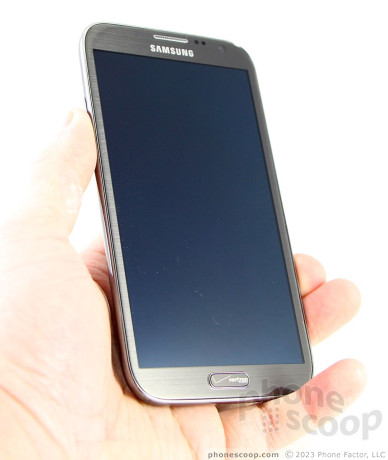
Verizon's version of Samsung's behemoth impresses with good call quality, excellent LTE 4G performance, and exceptional battery life. This Android superphone has a lot going for it.
Form
Is It Your Type?
The original Samsung Galaxy Note may have been laughed at as an aberration, but smartphone makers are no longer laughing. Samsung's phablet is a bona fide hit, and is now available from every major carrier in the U.S. This follow-up smartphone improves nearly every feature while still maintaining some degree of refinement. If you subscribe to the "bigger is better" mantra, then the Note II could be the phone you're looking for.
Verizon's version of the Note II runs on its CDMA 3G and LTE 4G networks, but is otherwise the same hardware and software offered by AT&T, T-Mobile, and Sprint. Many portions of this text has been carried over from Phone Scoop's reviews of the T-Mobile and Sprint Note II variants. In this review, we evaluated the Verizon version for its network, signal, calling, and battery performance, as well as other attributes that make it unique to Verizon. Those sections are new.
Body
In redesigning the Galaxy Note, Samsung borrowed heavily from the design of its own Galaxy S III smartphone. The Note II uses the same design language and materials as the GSIII, only it's bigger. Putting the two side-by-side, the family resemblance is unmistakable. The Note II is the GSIII on steroids.
I've used the Galaxy Note II for two weeks, and it got a lot of attention everywhere I took it. There's no question the size makes it stand out. One friend of mine, who was using an iPhone 3GS, looked at it and said, "What, are you trying to give me smartphone envy?" Another friend of mine said, "Wow, what is that, a mini tablet?" Yeah, with a 5.5-inch screen, you can say that.
The Note II has clean lines, a straight-forward design that features curves instead of edges, and still manages to look sleek despite its giganto-phone proportions. The materials are mostly plastic and glass. I really wish Samsung would step up the quality of its materials across the board. The plastics are strong, but still come off as the cheap design option when you look at what HTC, Nokia, LG, and Apple are doing with materials these days. The glass surface of the display feels good under the thumb, but I'm not a fan of the thin battery cover.
One important change Samsung made with the Note II when compared to the original Note was to reduce the width. The Note II's screen — and hence the entire phone — is thinner. We're talking about a half a centimeter here, which may not sound like a lot, but it has a huge impact. The narrower profile makes the Note II much easier to hold in your hand. It's still impossible to wrap your fingers all the way around it, but believe me when I say the reduced width goes a long way to improving the daily usability of this phone.
The smooth surfaces are slick and glossy. Both the front and back are prone to collecting smudges and finger oils. It looks pretty gunky after using it for a few moments. However, the slippery surfaces mean the Note II glides into your pocket with ease. If it fits, that is. I tried carting the Note II around in several different pairs of jeans. It barely fit into one pair. No matter which pair of jeans I was wearing, the Note II's profile was easily visible on my leg. I always knew the phone was there, it's just too big and heavy not to notice.
The Note II uses a physical button for accessing the home screen. Its about an inch long and elliptical in shape. It has good travel and feedback. The back and menu keys are capacitive buttons to either side of the home button. There's no multitasking button, but if you press and hold the home button the multitasking panel will open.
The volume toggle is on the left edge. It feels cheap and produces a "clacky" sound when pressed that I found unappealing. The same goes for the lock button on the right edge. The microUSB port is on the bottom and the headphone jack is on top.
The battery cover can be peeled off in typical Samsung fashion by digging your thumbnail into a little slot. The 3100mAh battery itself can be removed if you so choose. You have to pull the battery before you can access the SIM card. The microSD card can be hot swapped without pulling the battery.
The S Pen is buried in the bottom of the Note II. It's quite simple to retrieve or insert. The Note II offers haptic vibration when the S Pen is removed from or stored in the Note II. The vibrations are meant to make the owner aware that the S Pen is or isn't where it ought to be.
Performance
Screen
The screen measures 5.5-inches across the diagonal, compared to the original's 5.3-inches. It actually lost pixels. Where the original had 1280 x 800 pixels, the Note II has 1280 x 720. The aspect ratio has changed to something closer to 16:9. Overall, it's a good display, differences aside. It is as bright and colorful as any Super AMOLED display produced by Samsung. With such a large area to fill, pixels are certainly visible from a close distance (six inches or so), but you have to look hard to see them. It's not as sharp as the GSIII's display, which packs the same number of pixels into a 4.8-inch space. But it's a nice huge canvas on which to interact with your content.
Signal
The Verizon Note II is the best of the bunch when it comes to signal performance. It always remained connected to Verizon's LTE and CDMA networks, and never entirely lost the signal. The LTE 4G performance was particularly good. Thanks to the pervasiveness of Verizon's LTE in the metro NYC area, the Note II was almost always on 4G, and the 4G was blazing fast. Of all the devices I've tested on Verizon's LTE network, the Note II is among the best. As far as calls go, the Note II connected all of them on the first attempt, and never dropped any. As I said, the Note II is a strong signal performer.
Sound
As with the Sprint Note II, the Verizon Note II is a good voice phone. For whatever reason, the two CDMA variants run circles around the GSM variants with respect to phone call quality. The Note II also outperforms other recent Verizon devices I've tested, such as the Spectrum 2 and Droid DNA. The earpiece delivered crystal clear voices at exceptionally loud volumes. The speakerphone is also quite good. It was respectably loud, and the quality was superb. Ringers and alerts are loud enough that you won't miss them unless you're standing next to a jack hammer. In which case, the vibrate alert should do the trick.
Battery
The Note II has a 3100mAh battery. Even with the large display and constant use, the Note II easily lasted more than a day on a single charge. I pushed it to the max several days in a row and wasn't worried one bit about making it to the end of the day. It's important to point out that this includes nearly 100% time spent connected to Verizon's LTE 4G network. The battery is simply huge, and it provides plenty of power for the Note II. If you charge it every night, you'll have plenty of power to get you through your day.
Basics
Menus
The Note II runs Android 4.1 Jelly Bean, but you wouldn't know it thanks to the TouchWiz user interface skin from Samsung. Aside from the presence of a handful of Verizon-branded apps and services, you wouldn't know the Note II was a Verizon device just by looking at the user interface.
The lock screen, which can be unlocked by swiping in any direction, offers five customizable shortcuts. By default, those are to the phone, messaging app, Google search, email, and camera. Just touch the app you want to open, swipe it, and you'll go directly there. The notification bar is visible from the lock screen, so you know if you've got unread emails, messages, and other items waiting, and you can access notifications from the lock screen.
The Note II has five active home screens which can be packed with widgets, apps, shortcuts, contacts, and so on. The main app menu is a customizable set of grids. Apps can be deleted, hidden, shared, and so on.
The drop-down notification shade has become a critical part of the UI. Not only does it allow you to triage your various missed calls, messages, and other notifications, it also allows you to toggle on/off all the radios and access the full settings menu.
Performance of the Note II was fantastic across the board. Thanks to the speedy Exynos quad-core processor, the device had plenty of oomph for powering the various applications on the Note II's large screen.
Calls/Contacts
The phone app itself is more or less the stock version of the Android dialer. It's got a huge software dialpad, with tabs that run across the top for accessing the call history and contact groupings.
The Note II has an incredible array of options for the phone app. For example, you can turn on/off noise cancellation, as well as dial in your own preferences for volume, clarity, and warmth. Using these tools can improve in-call performance.
The contact app behaves more or less like the stock Android contact app. Features I liked include the different widgets for controlling and connecting with your contacts. For example, you can set a direct access shortcut on the home screen that includes the contact's most recent social network status update.
Messaging
As expected, the Note II offers the stock Gmail, email, SMS/MMS, Google Talk, Google+, and Google+ Messenger apps. Together with their associated widgets, they make an impressive arsenal for reaching out to and connecting with your friends, family, and colleagues.
The Note II also includes ChatON, Samsung's instant/text messaging application. Rather than send messages via SMS, it sends IMs as network data. ChatON natively syncs with your Google Talk contacts and the user interface is plain and simple enough to use. ChatON is a cross-platform application, meaning it will work on Android devices as well as iOS, Bada, BlackBerry, and Windows Phone.
Neither Twitter nor Facebook is preloaded. You have to add them yourself.
Extras
Media
The Note II stays in familiar territory when it comes to media consumption. The bare-bones music and video playback apps are on board and can be used with most sideloaded content. The Note II is also loaded with the the Google Play Store and associated apps for music, video, books, magazines, and apps.
The Note II also comes with Samsung's Media Hub and Music Hub. The Media Hub is an alternative place through which to purchase and/or rent movies and television shows. It works fine, but requires a Samsung user account. The same goes for the Music Hub for making music purchases.
Last, the Note II includes the Verizon-branded NFL app, viewdini, Amazon MP3, Audible, and viewdini.
Camera
The Note II includes an 8-megapixel shooter. It does not have a dedicated camera button, but the camera can be launched via the lock screen shortcut. It loads quickly.
The layout of the camera controls is typical for a Samsung smartphone. There is a control strip down each side; the viewfinder is positioned between them. The settings strip - which is fully customizable - offers access to features such as the flash, exposure controls, scenes, shooting modes, and so on.
Once you've spent a moment familiarizing yourself with the controls and perhaps even customized them to your own liking, the camera is a breeze to use. It focuses and shoots photos quickly. You can choose to use touch-to-focus if there is something in particular you want to be in focus.
Photos
As I expected, the images I captured with the Verizon variants of the Note II were on par with the excellent results from the AT&T, Sprint, and T-Mobile versions. The camera sensor is able to accurately capture exposure and color, while the shutter does a fine job of making sure everything is in focus. It's a good camera for a smartphone, no doubt about that.
Video
Video also looks great. Again, all of the elements are captured correctly. The video is razor sharp, well exposed, and all the colors looked spot on. You'll certainly be able to capture share-worthy video with the Note II.
Gallery
The Note II's gallery application is very close to the stock Android 4.0 gallery app. The basic view includes a mish-mash of photos from all your accounts in one epically huge grid. Using the tools at the top of the page, you can shift the view to specific folders or collections of photos.
The Note II has the same photo-editing features that most Android 4.0 smartphones do. Images can be cropped and rotated easily. Also, more intensive edits (straightening the image, killing red-eye, correcting exposure/color) are handled by the Samsung-enhanced gallery app.
Apps
The Note II comes with a typical mix of Samsung and Verizon-branded apps. Stand-outs include Flipboard and Paper Artist (a really cool scribbling app that takes advantage of the S Pen). You can't delete most of the pre-installed apps, but you can at least hide those you don't use. Either way, there's plenty of on-board storage for your own apps. The Amazon App Store is on board, too.
Bluetooth
The Note II's Bluetooth radio worked flawlessly. It paired and connected with every device I have sitting on my desk. Phone calls sounded quite good when routed to a Bluetooth headset. I have no complaints about stereo music, either.
Browser
The Note II ships with the stock Android browser. The application itself is fine for browsing the web and does a good job of rendering web sites. It performed excellently on Verizon's LTE 4G network. Web pages appeared quickly thanks to the speedy power of Verizon's 4G. There are plenty of alternative browsers available in the Google Play Store, however, if you're looking for something a little bit different.
Clock
There's a white digital clock on the lock screen. It is big enough to be seen at an arm's length, but it cannot be customized at all. There are a multitude of clock widgets available for the home screen.
GPS
The Verizon Note II has Google Maps and VZ Navigator for navigation. The GPS radio worked really well. It pinpointed me quickly and accurately (often to within 10 feet). I didn't have any trouble routing directions between points. Both Maps and Navigator are capable tools when it comes to plotting directions and routing you from Point A to Point B.
S Pen
The Note II comes with all the same "S" apps that were on the GSIII, as well as a number of new features for the S Pen stylus.
The S Pen itself is improved. Not only is it thicker, it has a "right click" button for activating secondary features on the screen, such as menus. It slips into the Note II's bottom edge easily, and offers haptic feedback when removed or put back. The thicker profile of the S Pen makes it easier to hold and use.
The S Pen now also has an on-screen pointer of sorts. When you hover with the S Pen about one centimeter above the Note II's display, a tiny pointer appears on the screen. The pointer gives you an approximate idea of where the S Pen will land if you tap. The cool thing, however, is that the secondary action buttons works even when hovering. So, for example, you can hover over an app, press the button on the S Pen, and open a settings menu or similar.
The one thing I think is insanely dumb is that the S Pen can't interact with the Back and Menu buttons on the phone itself. These capacitive buttons aren't part of the display, but it feels intuitive to use the S Pen to tap the Back button when you're browsing the device. It won't work. You have to use your finger.
S Note
The S Note app really is useful if you're not averse to using the stylus. It is a full-fledged creative app that can be used to create all sorts of documents, including memos, letters, newsletters, cards, and many others. It offers some really cool tools, such as recognizing mathematical formulas, or shapes. For example, if you draw a circle, the S Note software will automatically clean it up and make it a true circle instead of your scrawled, uneven rendering. There are plenty of templates that make creating new documents a snap, and inserting text, images, and other content from other parts of the Note II is a breeze.
Notes can be multiple pages long, and S Note includes handwriting recognition software as well as access to the Swype keyboard. You can import clip art, or maps, you can skip the pen and keyboard entirely and dictate notes, and of course you can send the notes to others via email, social networks, etc.
S Voice
Like Apple's Siri, S Voice on the Note II is a voice-controlled assistant. Double tap the home key and S Voice launches, asking you what you want help with. You can search for contacts, dictate SMS messages, check the weather, see alarms, and so on. It definitely has limitations. You can't use it to start and address an email, for example, but you can dictate the text therein. You can have it start the media player, but not open the camera and take a picture.
GroupCast
The GroupCast app allows one user to share their content with a group of other Note II (or GSIII) users. For example, say I choose to share a photo album with you. Not only can you see it on your device (this is all accomplished over Wi-Fi, by the way), but you can interact with it. Other participants can swipe through the gallery, which is cached locally on the participants' devices, as well as write notes on the images or other content being shared. It's pretty neat.
TecTiles
The Note II also works with Samsung's TecTiles. TecTiles are programmable NFC stickers that will interact with the Note II. Using a separate app, Note II owners can set up each tag to perform one of about a score of actions. For example, use one at work to turn on the Wi-Fi radio and automatically connect to your corporate network. Or use one to initiate a phone call to your significant other when you get home. Programming the TecTiles is a cinch. Samsung is selling the stickers in packs of 5 for $15.
Wrap-Up
The Samsung Galaxy Note II is a big, big phone in more ways than one. True, it is one of the largest handsets you can buy, but the new dimensions make it an easier device to use day in and day out. Unlike the original, I found I was used to the size after a few days. It's still difficult to use one-handed, however, and for some that might be a deal breaker.
The Verizon variant of the Note II is probably the best of the bunch. It has all the same features, but surpasses the performance of the AT&T, Sprint, and T-Mobile versions in the key areas of voice quality and data speeds.
The software and tools are robust, the media powers second-to-few, the camera and video camera excellent, and the cool features of the S Pen and its associated software are much improved over the original Note.
For the consumer seeking to merge their smartphone and tablet into one device, the Note II is certainly the first device to get the formula (mostly) right.
Comments
"Plasticky"
Rather a resin/vinyl material, it is the same material used in safety helmets. Does this make it lack durability? The polycarbonate material absorbs impact far better than stiffer material. This means it protects the cargo inside much better. Thus why they use this material. When insurance claims are made on phones, I think it is far less expensive to repair and refurbish a handset where the inner components haven't been sacrificed due to hard impact. As cars are made to absorb impact to protect the occupants. It is cheaper to total a vehicle rather than pay out very expensive health and medical insurance.
In...
(continues)
I have this device on Sprint and yes plasticy does describe the feel a bit slick for my taste but the specs far outweigh this skin deep review.
This phone makes for a great daily driver, the size does take a bit getting ...
(continues)
(continues)


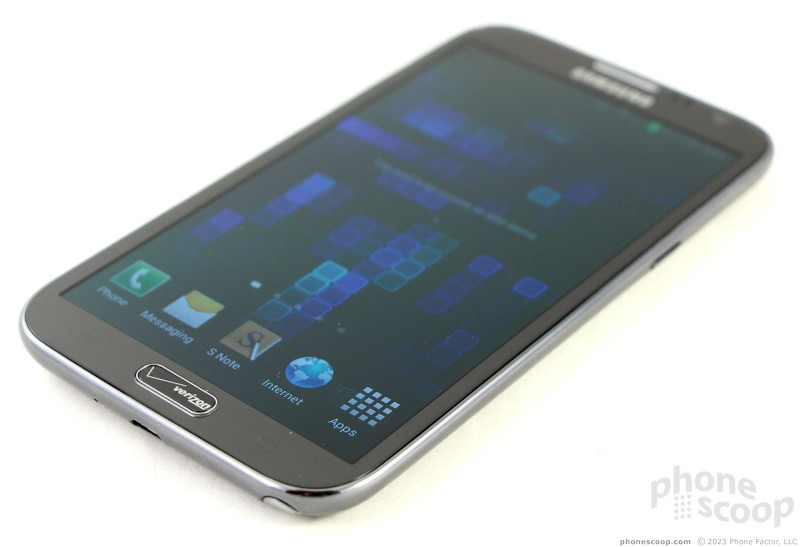














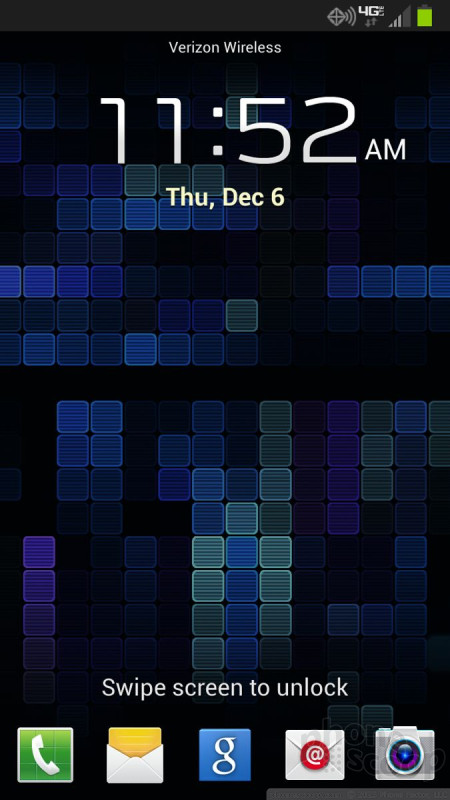











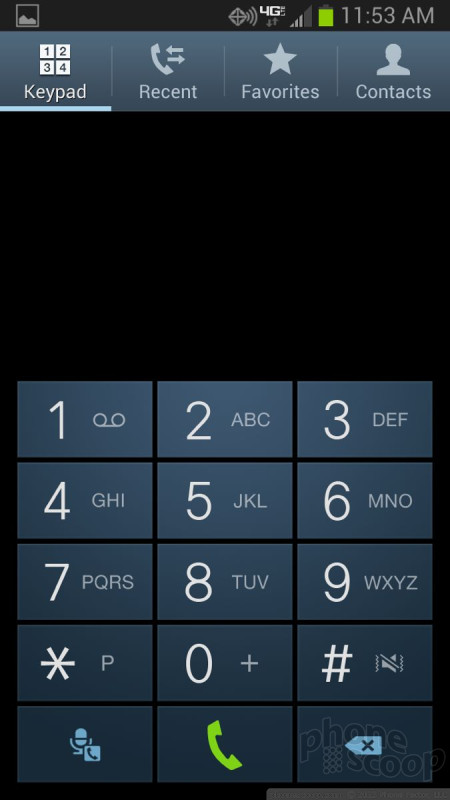













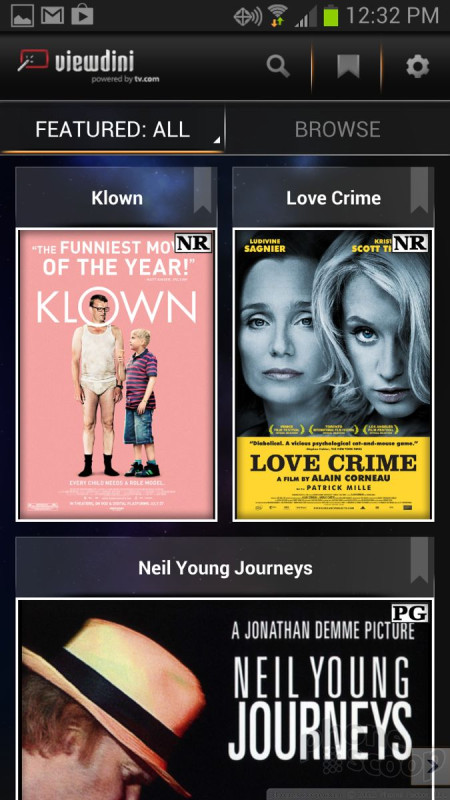



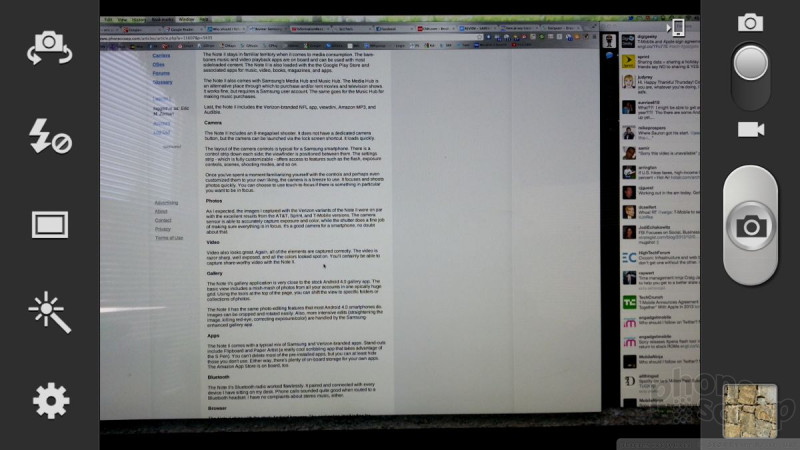

















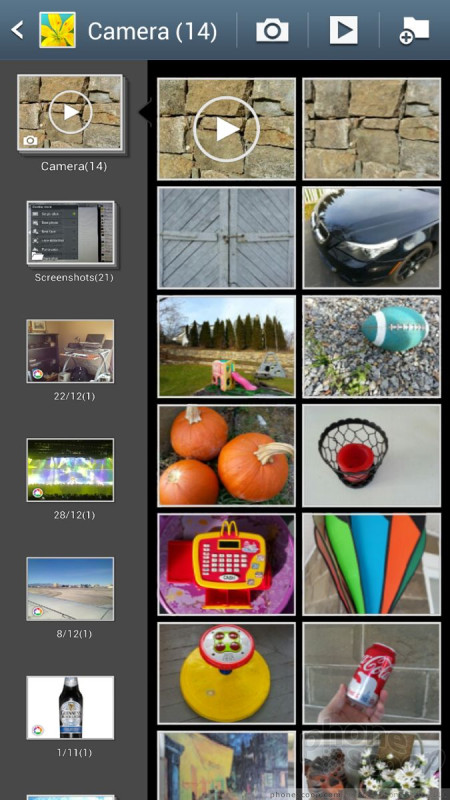





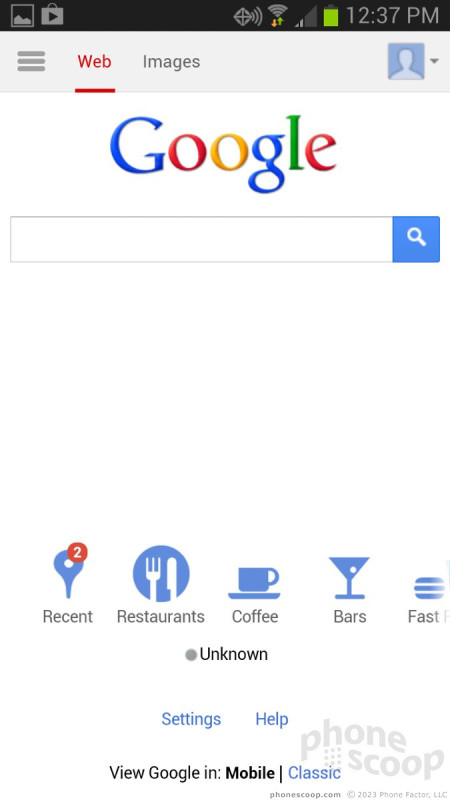

















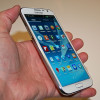 Hands-On: Samsung Galaxy Note II
Hands-On: Samsung Galaxy Note II
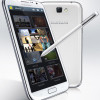 Samsung Reveals Galaxy Note 2, Plans U.S. Version
Samsung Reveals Galaxy Note 2, Plans U.S. Version
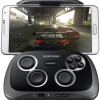 Samsung Debuts GamePad for Android Phones
Samsung Debuts GamePad for Android Phones
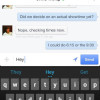 Facebook Home and Updated Messenger Hit Android
Facebook Home and Updated Messenger Hit Android
 Samsung Galaxy Note II (Verizon)
Samsung Galaxy Note II (Verizon)




